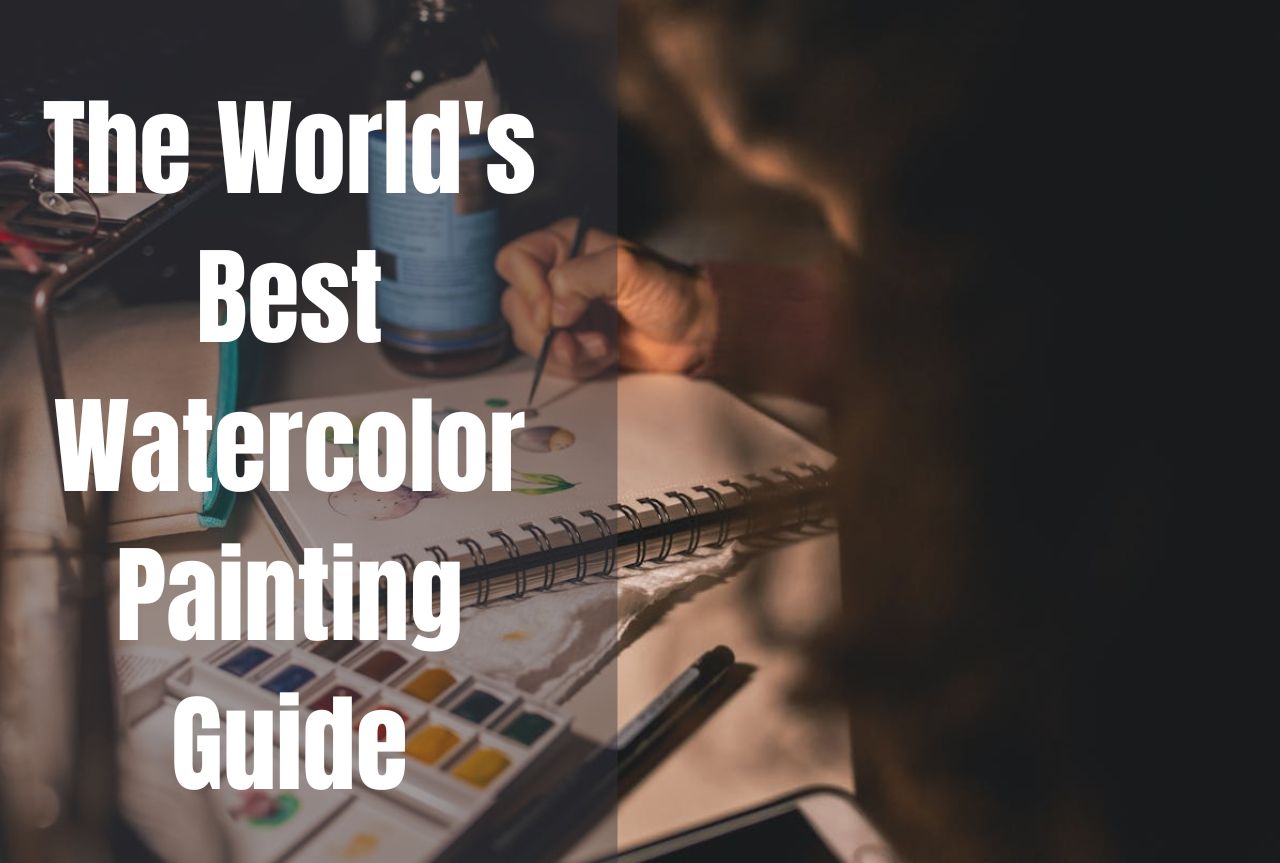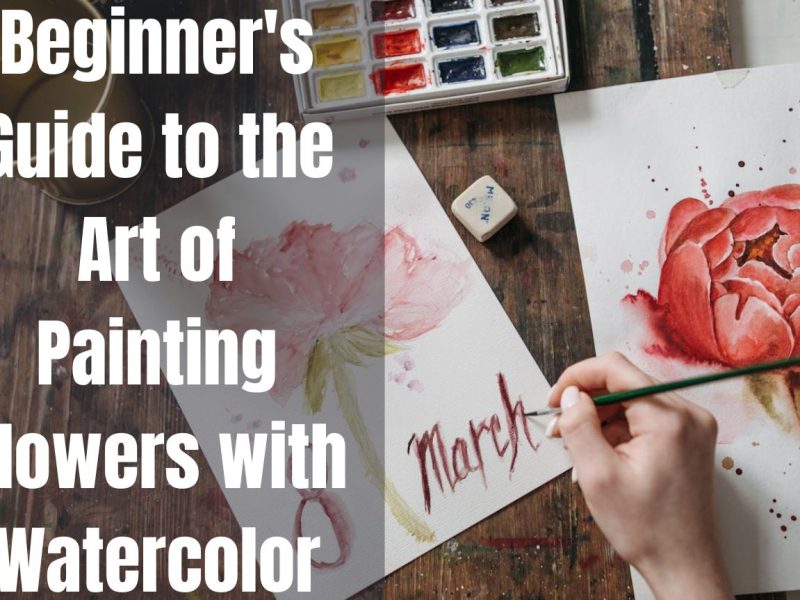For ages, both artists and viewers have been captivated by watercolor painting. Its ethereal quality and clear, bright transparency make it a one-of-a-kind way for artists to show their creativity. This guide aims to give you a thorough understanding of watercolor techniques, from the basic materials required to the advanced techniques to make your artwork come to life.
How to Get Started with Watercolor Painting?
Before looking into the colorful world of watercolors, you must ensure you understand the basics. A technique called watercolor painting involves combining pigments with water to make a transparent medium. In contrast to oil or acrylic paints, watercolors can blend easily on paper, producing a wide range of colors and effects with only a few strokes of the brush.
What is Watercolor Painting?
The cave paintings of Paleolithic Europe are the origin of watercolor painting, an old art form. Its main idea has changed over the years, but it’s still the same: use water-soluble pigments to make delicate and expressive drawings. The beautiful thing about watercolor is that you can’t always tell what it will do or how it will behave on paper.
Essential Materials for Watercolor Painting
You’ll need a few essential materials to begin your watercolor journey:
- Watercolor Paints: come in tubes, pans, and liquids; each type has advantages. Tubes give you bright colors and are great for making many of them, while pans are small and great for painting while you’re on the go. Liquid watercolors have a lot of color and make bright paintings.
- Brushes: Different kinds of brushes are used for watercolor painting. It’s easy to use round brushes for fine details and broad strokes. For splashes and strong, straight lines, flat brushes are great. For fine features, you use smaller and smoother brushes.
- Paper: The quality of the paper you use can greatly affect how your painting turns out. To absorb water without warping, watercolor paper is usually heavier. It has different feels, from rough to smooth, after being hot-pressed.
How to Set Up Your Watercolor Workspace?
Setting up a good space for painting is very important. How to set up your work area:
- Palette: Put your colors in a way that makes sense to you, ensuring that the colors you use most often are easy to find.
- Buckets for Water: Keep two buckets of water on hand—one for cleaning your brushes and the other for mixing clean water with your paints.
- Towels: Always have a cloth or paper towel to wipe off your brush and keep the color and water from running.
You’re ready to start painting with watercolors since you know these basics. Remember that practicing and waiting is the best way to get good at painting. You’ll find your style and method for this lovely art form as you learn more about the materials and techniques.
Learning How to Use Watercolors?
Getting better at different watercolor techniques will help you fully express your artistic vision as you go along. There are two main types of watercolor techniques: those that are good for newbies and those that are more advanced. We’ll discuss these techniques and how they can help your watercolor work look better.
Watercolor Painting Techniques for Beginners
The fundamental techniques in watercolor painting are wet-on-wet and wet-on-dry. Using watercolor on wet paper is called the “wet-on-wet” technique. This lets the colors flow and blend, making soft edges and gradients. It’s easier to control the wet-on-dry technique, though, because the paint is applied to dry paper, making clear and sharp strokes.
Also important techniques are layering and glazing. When you layer, you add more coats of paint to build up color and depth. When you glaze, you use a thin, clear layer of paint to change the tone and color of the layers below it without covering them up.
Advanced Techniques for Watercolor
For more experienced artists, masking fluid and other techniques can help you keep parts of the paper white or light-colored. It’s put on before painting and taken off when the paint is dry to show the paper that hasn’t been painted.
Stippling or sponge painting can add character to things like leaves or clouds. When you sponge, you dab paint onto the paper with a sponge. When you stipple, you use a brush to add small dots of color.
Fine details look great when you use the dry brush technique. If you paint with a brush that is mostly dry but full of paint, you can make lines and textures that stand out against the smooth washes common in watercolor works.
Watercolor Painting Step-by-Step
To make a watercolor painting, you must carefully plan and carry out the steps. This step-by-step guide will help you make your work.
1. Making plans for your composition
It’s important to plan your design before you start painting. Think about how the different parts fit together and where you want the viewer’s eye to go. Making quick sketches of your design on paper can help you stay on track and ensure your structure is well thought out.
2. Executing Your Watercolor Painting
To start, mix your colors and add a wash to set the overall tone of your painting. Add layers to the painting as it goes along to make the colors and features stand out more. To get the desired results, pay close attention to how long each layer dries.
Protecting and Preserving Your Watercolor Art
It’s important to protect and keep your painting in good shape after you’re done with it.
Finishing and Presenting Your Watercolor Painting
If the paper has bowed, you may need to flatten your painting after it’s dry. It could be put under a stack of big books. A varnish on top of your painting can protect it from dust and UV rays. When you frame your art, pick a frame that goes well with it, and consider using a mat so the painting doesn’t touch the glass.
Troubleshooting Common Watercolor Mistakes
The best techniques do not always work as planned. Some usual problems with watercolor painting can be fixed in this way:
How to Fix Mistakes in Watercolor Painting?
- Moving Color: If you use too much paint, remove it with a clean, wet brush or a paper towel. Use a soft cloth to wipe the area until the color is gone.
- Fixing An Uneven Wash: To fix an uneven wash, use clean water and a brush to wet the area again, then smooth the color while it’s still wet.
- Handling Muddy Colors: Too many hues mixed or layered on each other can cause colors to become muddy. To fix this, let the area dry completely and then carefully scrape off some muddy paint and paint it with new paint.
How to Stop and Fix Warping?
- Preventing Warping: Use heavier paper or stretch your watercolor paper on a board before starting to paint.
- Fixing Warped Paper: If your paper does warp, you can flatten it by placing it under a stack of heavy books once it’s completely dry.
Taking Your Watercolor Skills Further
If you want to keep improving as a watercolor artist, check out these links:
Resources for Watercolor Artists
- Books and Online Lessons: To learn new watercolor techniques, look for books written by well-known artists and keep up with online lessons.
- Workshops and Classes: You can get hands-on knowledge and personalized help by attending workshops or classes.
- Online Forums and Social Media Groups: Connect with other artists online to share your work and get feedback.
The Bottom Line
A journey of discovery and expression, watercolor painting is. You can make beautiful works of art that show off your unique point of view if you know the right techniques and are patient. Remember that every artist starts as a beginner, and every beauty begins with a single brush stroke.
FAQs
How can I keep my watercolors from getting faded over time?
Use paints made for artists that don’t fade easily, and cover your finished piece with UV-resistant varnish to keep it safe.
How should I improve my watercolor painting skills?
Always work at it, look at what other artists do, and don’t be afraid to try new styles and techniques.
Is normal paper okay to use for watercolor painting?
Watercolor paper is best because it is made to hold up against the paint and water without breaking down.



